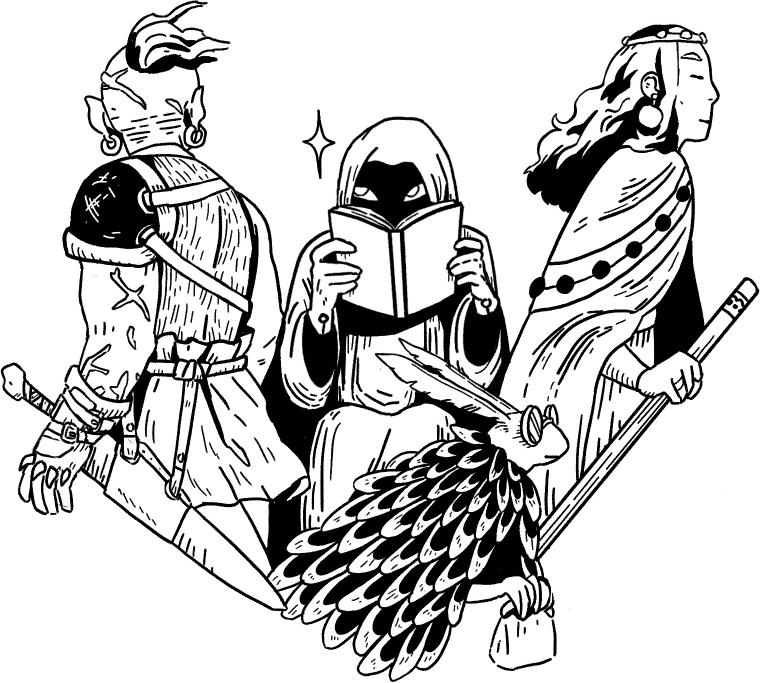How To
Major keys
Some Quest adventures are available as web-based manuals. On this page, we’ll show you some key ways that we present information throughout these manuals.
As you read our adventure manuals, remember that Quest is a collaborative storytelling game. These manuals are not like a script to a movie. We’ve left lots of blanks for you and your players to fill in. If you’re feeling creative, you can use the information in a premade adventure as a template to create your own content.
The Quest Game Book is required to play these adventures.

Page Number References
This manual occasionally references information that is located in the Quest Game Book, like special abilities and magic treasure.
When you see text like this
, you can hover over it to find out where more information is located in the Game Book. Page numbers starting with the letter "D" refer to the Digital Edition of the Game Book, and numbers starting with the letter "P" refer to the physical edition.Open Context
Context helps you and the players understand parts of the scene. Some context may be obvious to the players, like a menacing beast that they should know is too difficult to fight. Other bits of context may not be obvious — like the history of a place, or the reason why something looks suspicious. When you see a context box with this style, you can use it to enlighten the players. You can divulge the information in this box when it seems appropriate to do so in the scene.
Journey to The Dark Spire
Secret Context
Some context is only for The Guide to see at first. You can reveal it to the players if they find a way to discover it.
The Invisible Stalker
Exposition
The world comes alive when you describe it to the players. Adventure manuals include descriptive text that you can directly read aloud to the players.
As always, feel free to modify descriptions to fit the needs of your group and story.
Approach to The Spire
Dialog
While you’re in full control of what your characters do, we’ll occasionally give you suggestions about things for them to say. When you see quoted text like this, you can read it aloud to the players at the table.
— Keeper of The Dark Spire
Character Blocks
When an NPC appears in the story, we'll provide a “stat block” like the one shown here. “HP” signifies the creature’s hit points, and “ATK” signifies how much damage it can deal when attacking. Important characters may have additional information, like a backstory, an ideal, a flaw, goals, secrets, and relationships.
Some creatures have special features and abilities, which you can read more about in the Quest Game Book.
NPC Name
they/theirs
HP 20
ATK 100